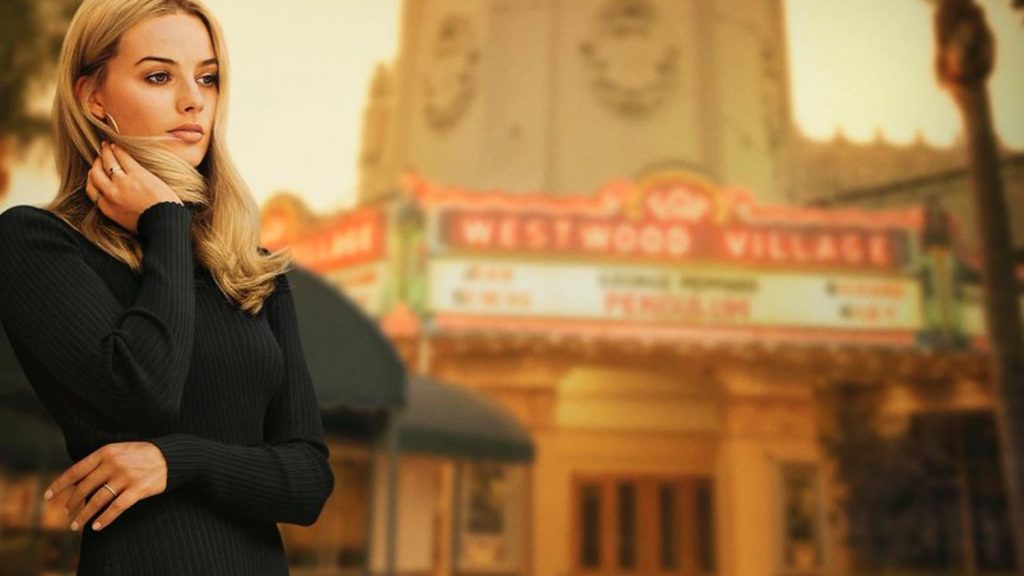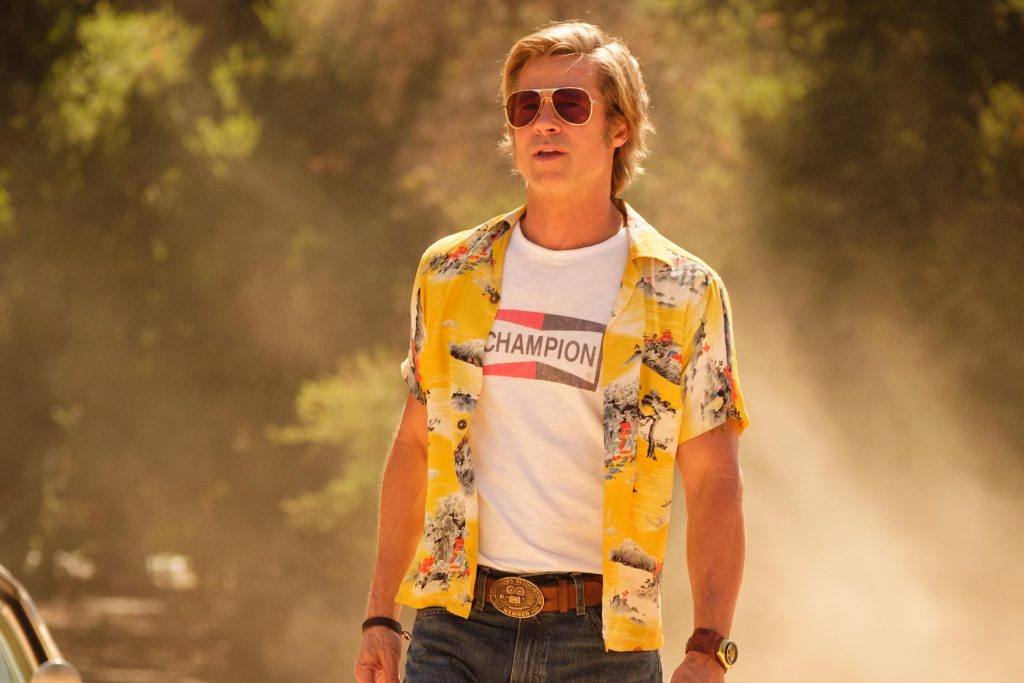Fans have long lamented Quentin Tarantino’s refrain that his tenth film will be his last, the director claiming that he wants to leave behind a strong body of work before his career becomes an exercise in diminishing returns like so many filmmakers before him. Before Once Upon A Time…in Hollywood, this waning in artistic credibility might have seemed unlikely. Now, it seems inevitable. It’s not that his newest feature (and biggest opening weekend box-office hit so far) is unimpressive or fails to be entertaining, on the contrary, it’s abundantly full of the many things we’ve grown to love and consider “Tarantino-esque.” The trouble is that the whole enterprise is both tired and self-aggrandizing, ambling towards a climax as glib as it is unsurprising.
Beginning in February of 1969, Leonardo DiCaprio plays Rick Dalton, a TV Western star on the decline who spends his free time cruising in his yellow Coupe de Ville with best friend/stunt double, Cliff Booth (Brad Pitt). While Dalton preps for a guest-starring spot and mulls over a deal to head to Rome to work on Spaghetti Westerns, elsewhere in LA, actress Sharon Tate (Margot Robbie) and husband Roman Polanski (Rafal Zawierucha) attend lavish parties and bask in marital bliss, unaware that they’re being watched by Charles Manson (Damon Herriman) and his followers, who’ve taken over a movie ranch in the nearby desert.
Similar to Once Upon a Time in Hollywood – Prior to Cannes Tarantino RELEASED OFFICIAL TRAILER
Since Kill Bill (2003), the director’s films have tended toward artifice and grandiosity, so it really tingles the pleasure receptors to see him scale back and channel the more laid-back style of his earlier efforts. Essentially a buddy comedy perched right atop the soon-to-split faultline of a profound cultural rift, the best reason to see Once Upon A Time…in Hollywood is that it’s utterly transportive. With breathtaking crane shots and lovingly-curated diegetic music, Tarantino skillfully takes his audience on a jaunt to a time and place long gone. It’s surprising that it’s taken him this long to make a movie in and about Hollywood, and the film is a love letter in the truest sense.

And yet, there’s something painfully inert and mannered about the film. The words “kaleidoscopic” and “collage” have been thrown around, but what they really mean is that Once Upon A Time…in Hollywood is scattershot and unfocused, frittering away its runtime like a greatest hits tour through Tarantino’s signature quirks and obsessions. In some ways, it almost feels as if the director were trying to use the script’s themes of legacy and the anxiety of growing older to examine his own artistic output, but much like Rick Dalton himself, it comes off more self-conscious than self-aware. Still, due largely to DiCaprio and Pitt, it’s an enjoyable, if not terribly engaging, ride.
That is, until the finale. Unlike Django Unchained or Inglourious Basterds (cartoonish revisionist fantasies that played fast-and-loose with historical fact to rewrite history for the victimized and marginalized), Once Upon A Time…in Hollywood works so hard to recreate the tactile reality of the period that when everything takes a jarring hard left in the final reel, it’s difficult not to roll your eyes, because you should have seen it coming all along.
Also, Read – THE HATEFUL EIGHT [2015]: THE BLOODY, SNOWY TALE OF MURDER, MYSTERY, AND MADNESS
What initially feels like a film that might treat the Tate-LaBianca murders with a touch of gravity declines in a juvenile outburst of violence that ends on a note of smug sentimentality as nuanced and subtle as a flamethrower. Essentially, Tarantino turns Tate into a symbol of an era’s lost innocence, the patron saint of the Dream Factory whose murder marked the literal death-of-an-era in both Hollywood and America’s cultural history. And while this may ring true in a symbolic sense, the director’s conception of the would-be murderers as dunder-headed hippie scum who is (SPOILER) cavalierly dispensed of at the hands of Dalton and Booth, in what’s meant to be a crowd-pleasing symphony of brutality, feels both lazy and morally questionable.

No, real-life murderers Susan Atkins, Tex Watson, and Patricia Krenwinkel don’t deserve to be treated with respect, but Tarantino seems utterly disinterested in the whys of the killings and their lasting impact. He seems to be asking: “What if the good times just went on forever?” but the times he yearns for never really existed, and in our post-#Metoo, post-Weinstein era, it’s clearer than ever that the Hollywood machine (like the country that gave birth to it) was built upon a bedrock of exploitation. Manson, like McCarthy, Nixon, or Donald J. Trump himself, wasn’t the disease, but a symptom, and though no one wants or expects Tarantino to inject modern politics into his filmmaking, Once Upon A Time…in Hollywood is a shallow and regressive technicolor dream conceived in deepest shades of black and white that grossly oversimplifies an epoch-ending event in order to flip the bird at those who brought it about.
Which brings us back to the gaping hole where Once Upon A Time…in Hollywood’s heart should be: Sharon Tate. For Tarantino, she’s not so much a person, but a sacrificial lamb cut down by hairy young people with hairier morals; a symbol of those All-American values the Westerns were always yee-hawing about who was destroyed by some kids who weren’t deluded victims themselves, but just a bunch of bad apples out to spoil the bunch. Many filmmakers have mishandled Sharon Tate’s story, but only Tarantino has made her into a spectator and damsel in a conservative male power fantasy, which somehow stands out as the most insulting thing the famously controversial filmmaker has ever managed to do.


